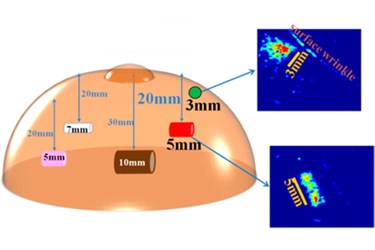"Electronic Skin" For Early Breast Cancer Detection
By Chuck Seegert, Ph.D.

Manual breast exams have had an impact on breast cancer diagnosis, but smaller lumps are often missed. To assist physicians in their quest to diagnose smaller lumps, a research team from the University of Nebraska has developed an interesting device that may increase sensitivity.
Breast cancer is the most common type of cancer in women, and diagnosing it as early as possible is key to increasing chances for a better treatment outcome. Unfortunately, it is difficult to detect tumors when they are smaller for many reasons. MRI, ultrasound, and mammography all have their limitations and costs, and at times clinical breast exams can be the best option.
According to a recent press release, however, the typical tumor size that can be detected by a clinical breast exam is about 21mm. The dilemma is that by detecting tumors when they are about half this size increases a patient’s survival rate by as much as 94 percent.
When detecting lumps embedded in the tissue, the relative stiffness of the lump is key. According to a study published by the team in the journal ACS Applied Materials and Interfaces, the human finger can detect lumps that are about eight to18 times stiffer than the surrounding tissue. To detect smaller lumps with lower stiffness, the team developed a pressure sensitive “electronic skin” comprising nanoparticles and polymers that detects and images embedded objects.
The sensitivity of this new device allowed for the detection of lumps as small as 5 mm in diameter at a depth of up to 20 mm, according to the press release. In addition, the images revealed the shape of the tumors, a feature that’s important for determining whether or not a tumor is cancerous.
Given the limitations of existing diagnostics, the search for improved methods is always a focus in the field of breast cancer research. Recently, in an article published on Med Device Online, a promising blood test for diagnosing breast cancer was described.
Image Credit: American Chemical Society
